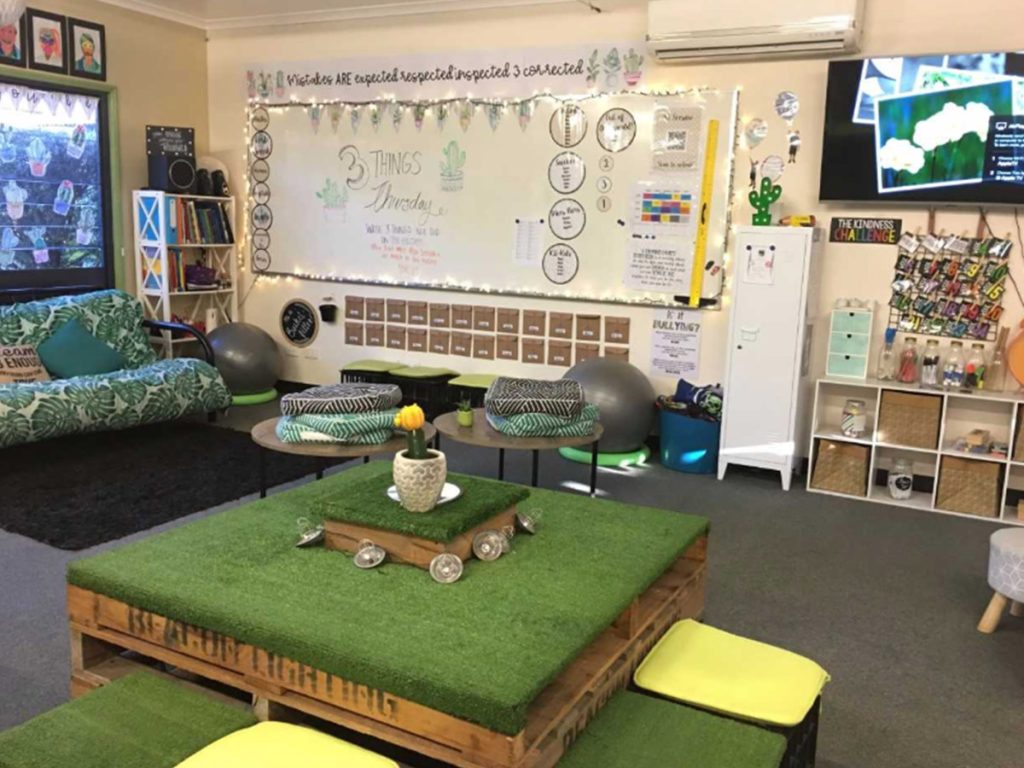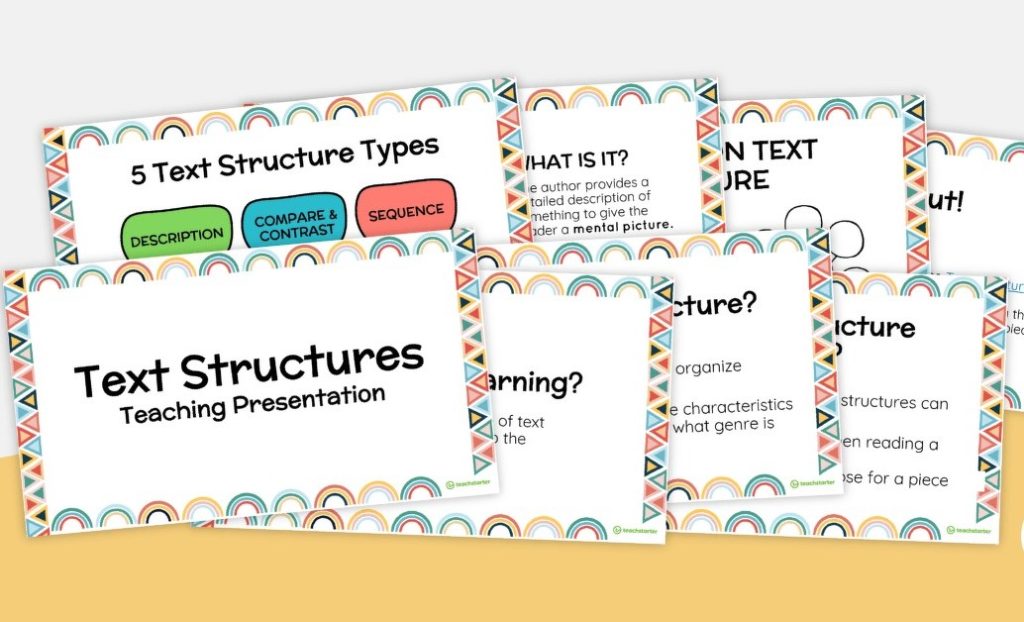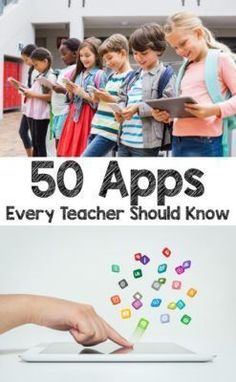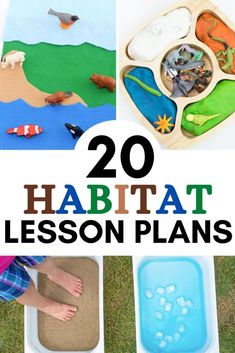Every year from October 4th to October 10th, the world unites in celebrating World Space Week. This international event honors the contributions of space science and technology to the betterment of the human condition. Inaugurated in 1999 by the United Nations General Assembly, it marks the anniversary of two significant dates in space history: the launch of Sputnik I on October 4, 1957, which kickstarted the Space Age by being the first human-made Earth satellite, and the signing of the Outer Space Treaty on October 10, 1967, which laid out the basic framework for international space law.
World Space Week is a phenomenal event that not only commemorates past milestones but also looks to inspire new generations in space exploration and innovation. Activities during this week are diverse and include educational programs, exhibitions, conferences, and public events designed to encourage an interest in STEM (Science, Technology, Engineering, and Mathematics).
The theme for World Space Week changes annually, contributing a fresh perspective each year that highlights different aspects of space exploration and development. Past themes have focused on women in space, remote sensing technologies, and even space unites the world.
During this time, agencies such as NASA, ESA (European Space Agency), and ROSCOSMOS host special events accessible to everyone from school children to university students, from scientists to enthusiasts. These events showcase advancements in aerospace technology, prospective space missions and facilitate discussions that explore how life on Earth is elevated through space-related activities.
Moreover, World Space Week acts as a global observatory for showcasing how satellites have revolved around our understanding of our planet. From climate monitoring to telecommunications and global positioning systems (GPS), it’s evident that assets in orbit play a pivotal role in modern life.
As we press forward into new frontiers with projects like Artemis aiming to return humans to Moon or the Mars rovers scouring for signs of past life on the Red Planet, World Space Week enables individuals worldwide to reflect on our journey into cosmos thus far—and dream about where we’ll go next.
Whether you’re an aspiring astronaut or an enthusiastic hobbyist observing the night sky from your backyard telescope, World Space Week offers something for everyone—an opportunity to celebrate one of humanity’s greatest collaborative ventures: The exploration of space.
10 Teacher Memes to Get You to the End of Term
As the end of the term approaches, teachers everywhere are feeling the bittersweet combination of exhaustion and anticipation. What better way to capture the rollercoaster of emotions than through the universal language of memes? Here are 10 teacher memes that perfectly encapsulate what it’s like to wind down another school year:
1. The “Countdown” Meme: A calendar with all but the last few days crossed off and a teacher with wild eyes frantically ticking off the seconds.
2. The “Survivor” Meme: A teacher on an island labeled “End of Term,” using a stack of papers as a distress signal, captioned “Will anyone rescue me from this pile of grading?”
3. The Coffee Transformation Meme: A sequence of images showing a teacher evolving from zombie-like in the morning to superhero after that first sip of coffee.
4. The No More Pencils Meme: Desks filled with broken pencils at term’s end, with a teacher holding up an empty sharpener captioned “We’ve made it too far to turn back now.”
5. The Escape Plan Meme: Teachers looking longingly out the window, as they strategically plan their quickest route out of school on the last day.
6. The Mixed Feelings Meme: A side-by-side picture showing a teacher crying over saying goodbye to students and then dancing for joy over the upcoming break.
7. The Technology Glitch Meme: An image of a frozen computer screen during final grades submission, with a panicked teacher holding up a sign that says, “Has anyone tried unplugging 2020 and plugging it back in?”
8. The Lost Under Marking Avalanche Meme: A hand protruding from an enormous pile of papers, carelessly yet purposefully holding up a white flag.
9. The Movie Day Meme: A frazzled teacher in front of a TV on wheels captioned “When you’ve officially run out of lesson plans.”
10. The Multipurpose Planner Meme: An image showing a desk planner open to June, covered in doodles, stains, and sticky notes, symbolizing the organized chaos endured throughout the year.
As you power through those final days, let these memes be a reminder that you’re not alone in your end-of-term hustle—and that there’s definitely some laughter to be had along the way!
Teachers Desk Alternatives
As educators, the traditional image of a classroom often involves rows of desks facing a large, imposing teacher’s desk at the front. However, this conventional setup is being reconsidered by innovative educators looking to create more dynamic, flexible, and student-centered learning environments. Let’s explore some compelling alternatives to the traditional teacher’s desk that are transforming classrooms around the world.
1. Mobile Teacher Stations: As opposed to a stationary desk, mobile teacher stations allow for flexibility and movement throughout the classroom. These stations can be equipped with wheels and contain compact storage for resources. This mobility enables teachers to interact closely with students, irrespective of where they are seated.
2. Standing Desks: Standing desks for teachers promote better posture and can lead to increased energy levels. With the option of adjusting height, these desks encourage a more active teaching style and reduce the sedentary nature of teaching.
3. Podiums or Lecterns: Smaller than traditional desks, podiums or lecterns take up less space and can be moved as needed. This option is useful for educators whose primary need is a place to hold notes or a laptop during lessons.
4. Sit-to-Stand Converters: These desktop additions offer versatility; they can be placed on any surface to transition between sitting and standing. Converters allow teachers to change their position throughout the day without needing an entirely different desk structure.
5. Collaborative Worktables: Instead of an individual desk, teachers can utilize larger tables that also accommodate small groups of students. This setup fosters collaboration and allows teachers to easily engage in hands-on activities alongside their students.
6. Minimalist Shelves or Caddies: For some educators, all that’s needed is some simple shelving or portable caddies for essential materials. This approach minimizes the “front of the room” focus and distributes accessibility throughout the classroom.
7. Technology-Integrated Solutions: Desks with built-in technology ports and outlets cater to modern digital needs without taking up extra space. Such solutions allow for seamless integration of tech tools into lessons without clutter.
Teachers who rethink their desk situation often find it leads to an improved classroom dynamic with increased interaction and engagement among students. In addition, these alternatives can make learning environments more inclusive by removing physical barriers between instructors and pupils.
As educational methodologies evolve, so too does classroom furniture. By considering various teacher desk alternatives, schools can adapt their spaces to better meet contemporary teaching practices and accommodate diverse student needs—ultimately enhancing educational experiences for everyone involved.
Printable Christmas Cards to Colour
The joy of Christmas often comes in many forms, from the sparkling decorations and festive music to the warm gatherings of friends and family. But one timeless tradition that brings its own unique warmth to the holiday season is the practice of giving and receiving Christmas cards. While store-bought cards are plentiful, there’s something incredibly special about creating your own. Printable Christmas cards to colour offer a personalized experience that can be both a fun activity and a thoughtful gesture.
For crafters, families, or anyone looking to add a personal touch to their holiday greetings, printable Christmas cards that can be colored are a delightful option. They come in an array of designs, from traditional Nativity scenes and winter wonderlands to more contemporary holiday staples like Santa Claus, reindeer, and Christmas trees.
One of the best aspects of printable coloring cards is their accessibility. All it takes is a simple download from a website that offers designs you like, and then printing it out on your choice of paper. Cardstock is recommended for a sturdier feel like traditional greeting cards.
Coloring these cards can be as meditative as it is merry-making. It provides a break from the rush of holiday shopping and planning. Families with children will find this an excellent opportunity for a cozy indoor activity where everyone can get involved. Kids delight in adding their own flair to cards that will be sent out to loved ones.
Adults who indulge in coloring find it relaxing during what can sometimes be a stressful season. Amidst the bustle, taking time to color—whether with pencils, markers, or even watercolor paints—can be therapeutic.
Moreover, these printable coloring cards are often free or low-cost alternatives that can save money during the holidays. For those on a budget or seeking more sustainable choices during Christmas time, these printables are an eco-friendly option – no shopping trips required, and they reduce waste by using paper only as needed.
When your design is all colored in, don’t forget the final touches! Adding glitter, stickers, or even ribbons can elevate your card and make it extra special before folding into shape and writing a heartfelt note inside.
Printable Christmas cards to colour encourage creativity and give people the chance to put their hearts into their festive wishes. This year might just be the perfect time to start this cheerful activity that makes for both an engaging pastime and personal way to spread joy during the holidays.
Video Backgrounds For Teachers
In the wake of the global shift to virtual learning, teachers across the world are looking for innovative ways to keep their students engaged during online classes. One effective technique that has gained popularity is the use of video backgrounds. Video backgrounds are dynamic, visually stimulating, and can be utilized to create an immersive learning environment for students.
The Magic of Motion
Visual stimulation can greatly enhance a student’s focus and retention. With video backgrounds, teachers can introduce motion and life into their lessons, which is particularly useful for subjects that benefit from visual aids. For instance, while teaching about marine life, a background video showing underwater scenes can captivate the children’s attention more than static images.
Creating Context
Video backgrounds can set the scene for the topic being taught. A history teacher discussing ancient civilizations could use video clips of historical landmarks, whereas a literature teacher could display settings from the novel being discussed. This context helps students better visualize and understand the subject matter.
Technical Considerations
When using video backgrounds, it’s important to ensure they are not overly distracting. Teachers should opt for videos with subtle movement and should steer clear of loud colors or rapid motion. Additionally, technical aspects such as loop time, resolution, and compatibility with video conferencing software should be considered.
Enhanced Engagement
Incorporating fun and educational video backgrounds relevant to lesson plans can result in increased student engagement during online classes. It breaks up the monotony of staring at a single image or a plain background and helps keep energy levels high among learners.
Accessibility
There are numerous platforms offering free or paid video backgrounds tailored for educational contexts. Some popular services include Canva, which offers animated classroom settings, and sites like Pexels or Shutterstock that provide more generic but high-quality video loops.
Safeguarding Attention
Teachers need to carefully select their video backgrounds to ensure they safeguard students’ attention rather than detract from it. The background chosen must complement the content without becoming the center of attention itself.
Conclusion
Video backgrounds serve as an excellent tool in a teacher’s arsenal for virtual teaching. They can facilitate an engaging atmosphere conducive to learning while aiding in visual representation of concepts discussed during classes. By balancing creativity with educational benefits, teachers can transform their virtual classrooms into dynamic learning spaces that inspire student interaction and participation.
Text Structures Slide Deck
Understanding the Intricacies of Text Structures in a Slide Deck
The world of writing is not just about stringing words together; it’s about building and shaping information so that readers can understand and engage with it effectively. This is where text structures come into play, providing a framework for writers to organize their content. When we transfer such writing into a visual format like a slide deck, understanding these structures becomes even more crucial.
A slide deck dedicated to text structures would dissect the various patterns of organization used in writing. These structures include but are not limited to sequence, description, cause and effect, compare and contrast, problem and solution, and order of importance. Each structure serves a different purpose and can dramatically alter the way information is received.
For example, a sequence structure lays out information in a chronological order or as steps in a process. A slide on this structure might use timelines or flowcharts to represent the sequence visually, making it easier for the viewer to follow along.
Descriptive text structure focuses on painting a picture in the reader’s mind, often utilizing sensory details. In a slide deck, this might be demonstrated through image-rich slides that complement the detailed descriptions provided in the speaker notes or accompanying text.
Cause and effect structures pinpoint relationships between events—what happened and why it happened. Slides tackling this structure could benefit from diagrams that link causes with their subsequent effects clearly illustrating their interconnections.
The compare and contrast structure evaluates similarities and differences between two or more subjects. A Venn diagram would be an excellent visual tool in a slide deck to show this in an instantly understandable way.
Problem and solution texts present an issue followed by one or more solutions. Here, slides could be divided into two parts: one for the problem with sufficient context and imagery, and another showcasing proposed solutions with bullet points or illustrations.
Lastly, an order of importance structure might either escalate (climax pattern) or de-escalate (anticlimax pattern) in significance. For such a structure, slides might utilize lists or graphs prioritizing points by their level of importance.
Incorporating these text structures into high-quality slides ensures that your audience doesn’t only hear your message—they see it structured in a way that resonates best with them. This enhances comprehension and retention of material presented in educational settings or professional environments alike.
In conclusion, grasping various text structures is vital when creating an engaging slide deck presentation. By carefully choosing the appropriate structure for your content and complementing it with visual elements that enhance comprehension, you can deliver powerful presentations that educate and inspire your audience.
11 Engaging Apps To Use In The Classroom
In the digital age, educators are constantly seeking new ways to engage students and enhance the learning experience. With the growing availability of tablets and smartphones, educational apps have become an invaluable resource for teachers. These 11 apps offer dynamic, interactive opportunities for classroom learning across a variety of subjects.
1.Kahoot! – A game-based learning platform that allows teachers to create fun learning games in minutes. Students can join with their own device and compete in quizzes and challenges.
2.Quizlet – A versatile app that provides tools for students to study information via learning flashcards, games, and quizzes. Teachers can use Quizlet to enhance vocabulary retention and reading comprehension.
3.Seesaw – An app that creates a student-driven digital portfolio. Teachers can empower students to document their learning with photos, videos, drawings, or notes.
4.Edmodo – A communication hub for the classroom. Teachers can connect with students and parents to facilitate discussions, share content, and assign homework.
5.Duolingo – With its user-friendly interface, Duolingo makes language learning interactive and fun through gamified lessons available in many languages.
6.Google Classroom – A free service designed to help students and teachers communicate, collaborate, submit assignments, and manage classroom work.
7.Tynker – Coding has never been more accessible for kids; Tynker introduces them to programming through games and puzzles, inspiring future innovators.
8.Remind – This messaging app is designed specifically for education; it allows teachers to send out reminders about assignments and announcements directly to students’ and parents’ phones.
9.Prodigy Math Game – Prodigy is an engaging math game with a built-in adaptive learning platform aligning content with student needs for grades 1-8.
10.Epic! – Encourages reading with access to a vast library of books for kids 12 and under; Epic! tailors content to the reader’s interests making it a personal reading experience.
11.Explain Everything – An interactive whiteboard app that enables teachers to create visual presentations that can include writing, pictures, and narration.
Integrating these apps into the classroom can bring about a unique educational experience that is interactive, collaborative, and in line with the technological skills that are essential for today’s digitally-fluent students.
Animals Teaching Resources
Animals are not only fascinating subjects for observation and study, but they also offer a wealth of opportunities for educational exploration in the classroom. From understanding basic biological concepts to exploring complex ecosystems, incorporating animal teaching resources can enhance student engagement and learning.
One effective way to bring the study of animals into the classroom is through the use of live specimens, which can be managed safely in terrariums or aquariums. Observing live animals provides students with firsthand insights into behaviors, lifecycles, and habitats. This direct interaction also fosters empathy and a deeper appreciation for living organisms among students.
Another valuable teaching resource is multimedia content such as documentaries, videos, and interactive websites that feature animals and their environments. These tools can transport students to locations across the globe, showcasing diverse species and ecosystems that would otherwise be inaccessible. Additionally, multimedia content often features expert commentary and cinematography that illuminate the intricacies of animal behaviors and physiological processes.
Print materials like books, magazines, and scientific articles serve as fundamental resources as well. They offer detailed information about animal anatomy, conservation efforts, and scientific research findings related to zoology. Teachers can assign readings to support lesson plans or encourage independent inquiry into specific animal-related topics.
Interactive activities such as games and puzzles focusing on animals can help reinforce knowledge about classification, adaptation, food chains, and more in an engaging way. These activities often promote problem-solving skills and critical thinking while providing a fun learning environment.
Moreover, lesson plans that include field trips to zoos, nature reserves, or farms allow students to see animals within different contexts: conservation centers, natural habitats, or agricultural environments. Such excursions deepen students’ understanding of human-animal interactions and the importance of biodiversity conservation.
Lastly, inviting experts such as biologists or zookeepers to speak in class can give students unique perspectives on career paths related to animal science and inform them about current issues in wildlife preservation.
Incorporating a variety of animals teaching resources not only broadens the educational experience but also helps instill a life-long interest in wildlife and conservation efforts among students. As our world continues to change rapidly due to human influence, educating young minds about animals is critical for ensuring a sustainable future where biodiversity is respected and preserved.
Tips And Tricks For Creating A Student Portfolio And For Making Student Handover Easy Us
Creating a standout student portfolio and facilitating an effortless student handover are crucial for showcasing skills and ensuring a smooth transition between academic or professional roles. Here are tips and tricks to make both processes more effective:
1.Start Early and Update Regularly:
– Begin compiling your portfolio early in your educational journey.
– Continuously add new pieces of work or projects, keeping the portfolio current.
2.Be Selective:
– Curate the best examples of your work that demonstrate a range of skills and abilities.
– Include assignments that received positive feedback or represent significant achievements.
3.Reflect Diversity:
– Show versatility by including different types of work such as essays, projects, presentations, and any extracurricular activities.
4.Demonstrate Growth:
– Arrange the portfolio in a way that shows progression over time.
– Consider a thematic organization to highlight development in specific areas.
5.Get Feedback:
– Share your portfolio with mentors, teachers, or peers to get constructive feedback.
– Use this input to improve both content and format.
6.Utilize Digital Tools:
– Consider digital portfolios which are easily shareable and can incorporate multimedia elements.
– Platforms like Behance, LinkedIn, or personal websites can be used to present your work professionally.
7.Personalize and Brand Yourself:
– Create a consistent look and feel that represents your personal brand across all materials.
– Include an ‘About Me’ section that conveys your story, strengths, and aspirations.
8.Document Extracurricular Involvement:
– Record any involvement in clubs, sports, volunteer work, or internships as it adds to your overall profile.
9.Include Testimonials:
– Ask for referrals or endorsements from teachers, supervisors, or peers to add credibility.
For an efficient student handover:
1.Create a Handover Document:
– Summarize key responsibilities, ongoing projects, upcoming deadlines, important contacts, and any critical information for the successor.
2.Organize Files Meticulously:
– Ensure all materials are correctly labeled and stored in an easily accessible system.
3.Debrief with Your Successor:
– Schedule one-on-one time to go over tasks personally and answer any questions they might have.
4.Provide Insider Tips:
– Share any personal insights about managing certain aspects of the role more effectively.
5.Support After Handover:
– Be available for follow-up questions and offer assistance as they settle into the new role.
By following these guidelines, students can create impressive portfolios that encapsulate their educational journey while also ensuring their successors receive all the necessary information to pick up where they left off seamlessly.
Teachers Share Cringeworthy Home Readers
Introduction:
In a recent survey conducted by Teach Starter, teachers were asked to share their experiences with cringeworthy home readers. Home readers are a vital component of early literacy development, but sometimes they can leave teachers questioning their content and appropriateness. This article explores the anecdotes provided by teachers, shedding light on the challenges they face and offering insights into improving home reader materials.
Paragraph 1:
One teacher shared her experience with a home reader featuring outdated stereotypes. The story portrayed a housewife as the main character, reinforcing traditional gender roles. While it may seem harmless, such materials send a message that can perpetuate harmful social norms. This teacher emphasized the need for updated and diverse representations in home readers to mirror the diverse population in classrooms.
Paragraph 2:
Another teacher expressed her frustration with a home reader that contained excessive violence. The story involved a superhero defeating villains in an aggressive and graphic manner. This teacher questioned the message it conveyed to young readers and suggested opting for alternative narratives that promote problem-solving, empathy, and peaceful conflict resolution.
Paragraph 3:
Some teachers shared their concerns regarding the lack of cultural diversity in home readers. One teacher mentioned how her students, who come from various ethnic backgrounds, struggled to connect with characters that did not resemble them. She stressed the importance of inclusive and culturally representative materials, fostering a sense of belonging and acknowledging the diverse identities within the classroom.
Paragraph 4:
Inadequate grammar and spelling within home readers were also commonly reported by teachers. These errors not only undermine the credibility of the materials but also hinder students’ language development. Teachers emphasized the need for rigorous editing and proofreading processes to maintain the quality of home readers.
Conclusion:
Cringeworthy home readers can pose significant challenges for teachers striving to provide engaging and inclusive literacy experiences for their students. By addressing the concerns raised by teachers and collaborating with educational publishers, improvements can be made to ensure that home readers serve as valuable resources in fostering a love for reading and promoting positive learning outcomes.











